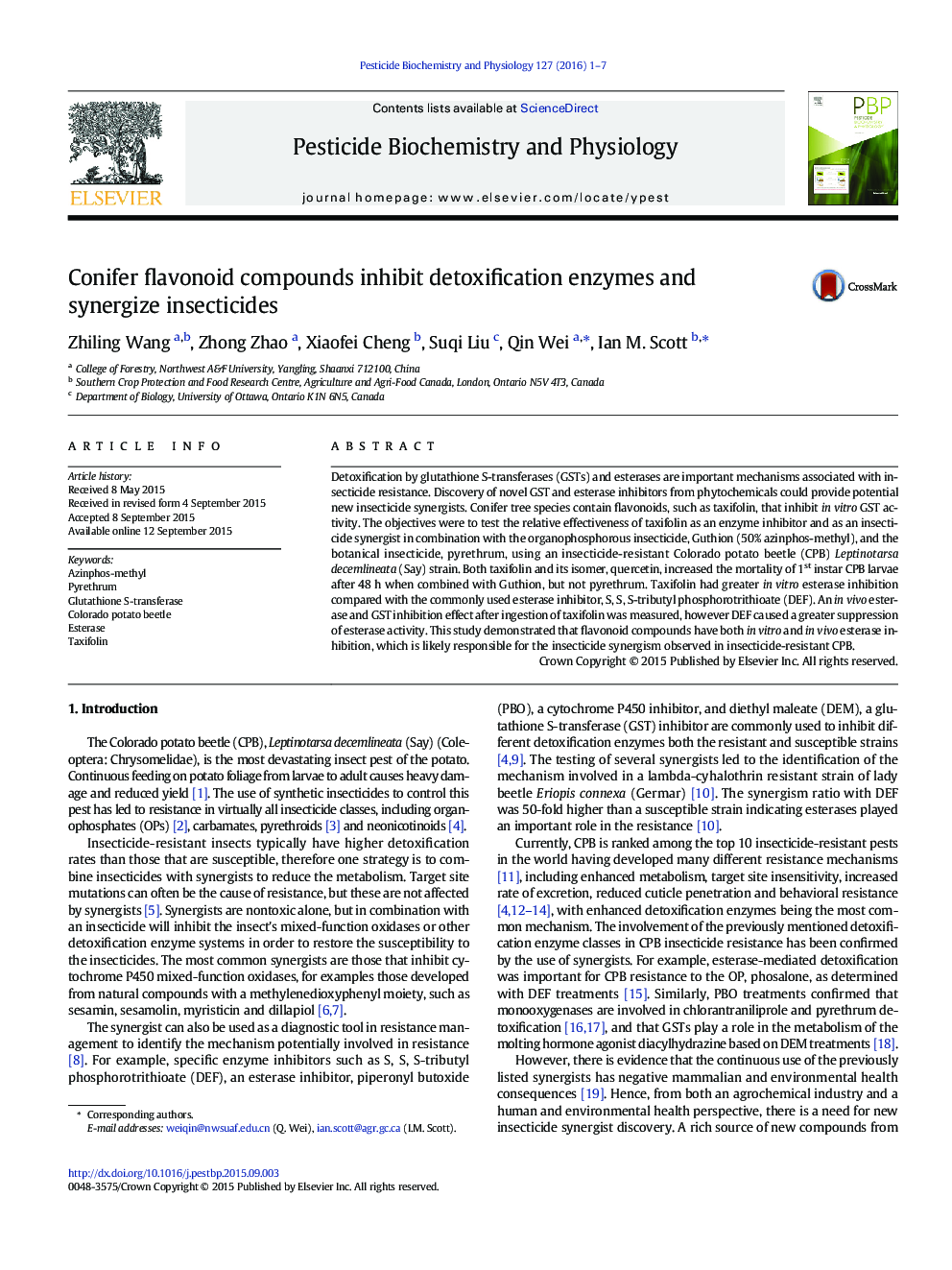| کد مقاله | کد نشریه | سال انتشار | مقاله انگلیسی | نسخه تمام متن |
|---|---|---|---|---|
| 2009013 | 1541772 | 2016 | 7 صفحه PDF | دانلود رایگان |
• The conifer flavonoid, taxifolin, is an in vitro glutathione S-transferase (GST) and esterase inhibitor
• Taxifolin inhibited Colorado potato beetle (CPB) esterase activity in vivo and significantly increased CPB mortality in combination with the insecticide azinphos-methyl
• Flavonoid natural compounds affect insect detoxification enzymes and are potential insecticide synergists.
Detoxification by glutathione S-transferases (GSTs) and esterases are important mechanisms associated with insecticide resistance. Discovery of novel GST and esterase inhibitors from phytochemicals could provide potential new insecticide synergists. Conifer tree species contain flavonoids, such as taxifolin, that inhibit in vitro GST activity. The objectives were to test the relative effectiveness of taxifolin as an enzyme inhibitor and as an insecticide synergist in combination with the organophosphorous insecticide, Guthion (50% azinphos-methyl), and the botanical insecticide, pyrethrum, using an insecticide-resistant Colorado potato beetle (CPB) Leptinotarsa decemlineata (Say) strain. Both taxifolin and its isomer, quercetin, increased the mortality of 1st instar CPB larvae after 48 h when combined with Guthion, but not pyrethrum. Taxifolin had greater in vitro esterase inhibition compared with the commonly used esterase inhibitor, S, S, S-tributyl phosphorotrithioate (DEF). An in vivo esterase and GST inhibition effect after ingestion of taxifolin was measured, however DEF caused a greater suppression of esterase activity. This study demonstrated that flavonoid compounds have both in vitro and in vivo esterase inhibition, which is likely responsible for the insecticide synergism observed in insecticide-resistant CPB.
Figure optionsDownload as PowerPoint slide
Journal: Pesticide Biochemistry and Physiology - Volume 127, February 2016, Pages 1–7
